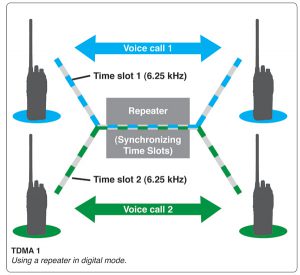The c-Bridge is a DMR call routing platform that directs calls to the appropriate destinations. This functions as a point to multi-point router or similar to VLAN Trunking. PNWDigital currently has 4 c-Bridges in service. Each c-Bridge has it’s own “dashboard” known as a Control Center or better known as CallWatch.
Talkgroups are the control points for users of the repeater network into the c-Bridges. They convey the voice traffic, the routing of that traffic and set timers for the duration of that voice path as well as hold-off some or all other traffic on that timeslot in use.
While is not necessary to understand the details as a user of the repeater network, the information below can provide more details.

Talkgroups (details) carry the voice traffic over the network as well as the routing information that tells the c-Bridge (Network or Conference Controller) who to send out that traffic and lastly with timers to help prioritize the traffic on that timeslot. A talkgroup may appear on or be distributed to just 1 repeater or to hundreds of repeater. The talkgroup name generally denotes the geography, language or purpose. A talkgroup may be programmed to ride on 1 of the 2 timeslots (voice paths). 2 simultaneous conversations are possible on each DMR repeater. For example, “Washington 1” is a talkgroup that goes out to every repeater in Washington on timeslot 1 and is always “on” or live all the time. This makes Washington 1 a great hailing talkgroup using the repeaters in the state of Washington.


PNW DMR – c-Bridge Call Flows
The c-Bridge is a DMR call routing platform that directs calls to the appropriate destinations. This functions as a point to multi-point router. The c-Bridge is composed of three sections:
- Managers – The link layer definitions for each time slot for each connected repeater
- Bridge_Groups – The definition of each Talk Group on each repeater.
- Super_Groups – The connection(s) for Talk Group between different Bridge_Groups.
A call is routed into the c-Bridge from the repeaters via a Manager and then forwarded to a Bridge Group. Generally there is a single repeater on a manager but 2 or more are supported if needed. From there the Bridge Group routes the call up to the Super Group logic to determine which other repeaters the call should be routed to.
The numbers that appear (ex: Washington 1-23) are what show up on Call Watch. The ‘-xx is” either odd for timeslot 1 or even for timeslot 2. These are just Bridge_Group (TG) identifiers, helpful in knowing where the call came from. there are 50 managers so that makes 100 TG indentifiers. The TG links between c-Bridge and other networked devices have CC rather than numbers (ex: Washington 1CC).
There are three basic calls indicated on the diagram as follows:
- A call on Washington 1 is sent to the c-Bridge. In this case the call will be routed to all Washington repeaters as this is a state wide talk group.
- A call on TAC 1 is sent to the c-Bridge. In this case the call will be routed only to those sites that a user has ‘opened’ the talk group by press their PTT. This only brings up repeaters that are actively using TAC 1 at the time.
- A call on Metro 2 is sent to the c-Bridge. In this case the call will be routed to the Local repeater that the call came in on or via several grouped repeaters as has been previously defined. NOTE: Local 1 only operates on a single repeater that the call originated on.
If you have questions or need a clarification, simply ask on the air, search messages or post to the IO Forum. Or, you may send your questions to: Support@PNWDigital.net
Visits: 385